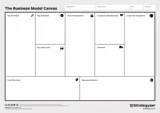Resillience as a strategy
Why Resilience Adds More Value To Companies Than Revenue Growth
Company resilience as a strategy recognizes that not all revenue is equal to the long-term stability and value of a company. By increasing the predictability of revenue, we increase the value of the company. The effort of increasing the predictability of revenue is often a more efficient use of resources than solely pursuing new revenue growth.
When evaluating the value of a company's annual revenue, we can categorize it into three groups based on predictability:
Fixed Revenue: This includes revenue which is guaranteed for 12 months or more such as annual licenses or subscriptions, retainers, minimum annual quantities or prepaid deliveries. The definition of fixed revenue is that no matter what happens, the customer is legally obligated to pay the agreed amount.
Predictable Revenue: In this case, we do not know exactly which customer, product or service will generate this revenue. But the volume of customers combined with their predictable behavior or commitments make it possible for us to estimate the annual revenue in this category with a variance of 20-30% - even in uncertain times.
Variable Revenue: This type of revenue is hardest to predict. It usually comes from new customers in the pipeline or as projects and services with existing customers which are not known or committed. For many companies most of their revenue falls into this category.
When valuing the company for a sale, its value will often be very closely correlated to the mix of these three revenue types. With Fixed Revenue, the valuation might be at a multiple of 20 times revenue or earnings before interest, taxes, depreciation, and amortization (i.e. EBITDA. Predictable Revenue could be valued at a multiple of 10 times revenue or EBITDA. In contrast, Variable Revenue may only be valued at a multiple of less than 5 times revenue or EBITDA.
Beyond Valuation
You might wonder why the revenue multiple matters if you have no immediate plans to sell your company. The answer is simply that, if a potential buyer is willing to pay up to four times more for your company because it has fixed or predictable revenue, then this type of revenue should also be four times more valuable to you.
The value of fixed and predictable revenue is that it adds long-term stability to your company. Variable Revenue is much more vulnerable to changes and shifts in the economy. An economic downturn can impact variable revenue in a way that may cause you to make significant changes to you company (e.g. downsizing and letting people go).
In contrast, Fixed Revenue provides with you the capability to predict, plan and budget at the beginning of every year. If your company’s expenses and burn rate are lower than your Fixed Revenue, then you truly have a resilient company. This means that any extra predictable or variable revenue become the ‘cherry on top’.
How To Improve Resilience
The core idea behind resilience as a strategy is that improving revenue predictability contributes significantly more to increasing a company's long-term stability and value. Increasing Fixed Revenue and Predictable Revenue in more valuable to company than simply growing new Variable Revenue.
In budgeting and planning, company leaders are often focused on revenue growth. This is especially the case when costs are increasing. The knee-jerk reaction is to plan for an equal or higher growth in revenue – even when the developments in the market do not support this expectation.
If we consider resilience as a strategy, we can shift our focus and energy to improving the predictability in our existing revenue; therefore increasing the long-term stability and value of our company. We can use the Business Model Canvas to rethink our core business model and improve the predictability of revenue in a number of ways:
- We can change our business model from products sales to a recurring service.
- We can change our revenue model from transactional revenue to licensing or subscription.
- We can make our transactional revenues more predictable by asking customers for a retainer or up-front payment.
- We can also ask customers with whom we work closely, for a commitment on part of the next years revenue (e.g. 70% guaranteed payment against a discount). This discount would serve as our insurance premium for more predictable revenue.
- Finally, we can integrate our business model closer with our customers and remove friction in the transaction – making it easier to buy from us.
At Strategyzer, we assess the strength of business models based on nine key characteristics. A couple of examples that are important for resilience include Switching Costs (i.e. the extent to which customers are inclined to stick with us over time) and Revenue Model (i.e. the extent to which our revenue is recurring). Improving these ratings of our business model enhances stability, predictability and the overall value of our company.
How To Improve Resilience
We often underestimate the value of resilience as a strategy for our business model. This lead us to chase after new Variable Revenue instead of developing more predictable revenue streams. However, it can be more valuable for leaders to focus on Fixed Revenue and Predictable Revenue. With this approach, we can build a more resilient company with predictable results and outperform competitors over time.




